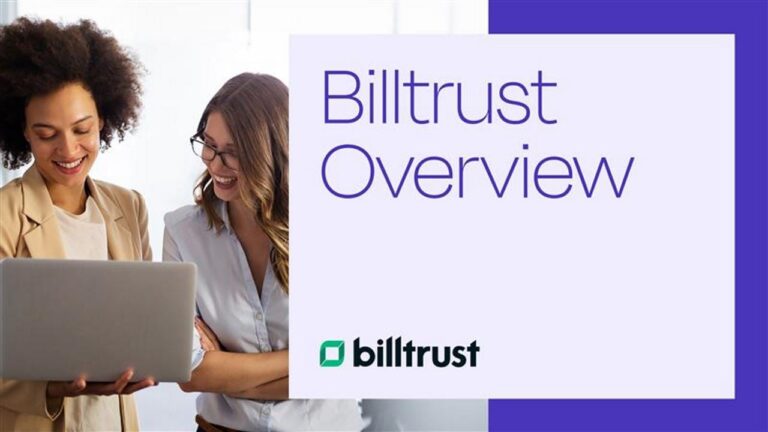This blog post was originally published on March 31, 2022 and updated on January 30, 2025.
Imagine your receivables team no longer buried in spreadsheets, chasing down payment confirmations. What if invoices sent themselves and payments matched with zero effort? For finance leaders like you, this isn’t just a dream—it’s the blueprint for effective cash management. The question is, how close are you to making it a reality?
Effective billing practices for enhanced AR management
Getting customers to pay on time is challenging enough, but the process becomes even harder when issues arise at the start. Errors like sending to the wrong recipient or providing inaccurate details can derail everything before collections even start. Ensuring flawless invoicing creates the foundation for success.
A frequent roadblock lies in customers claiming they didn’t receive an invoice. While this is sometimes genuine, it’s often a delay tactic. Counter
this by confirming how they receive invoices—be it email, a portal, or another method. If a customer receives an invoice electronically, start by verifying their email address and correcting it if necessary. Fixing this right away reduces the chances of such claims in future transactions.
Starting the clock
Did you know that some customers don’t begin processing an invoice until it lands in their system? Delays here are costly and unnecessary. Solutions like
self-service portals or automated invoice delivery tools are a great way to cut down on the time and effort it takes to invoice customers. They provide faster delivery, confirm receipt with audit trails, and effectively start the invoicing process as soon as the bill is generated.
Modernizing your invoice delivery saves time and closes the gap between invoice generation and payment processing, ensuring you’re ahead of any excuses.
The tangled web of payment misapplications
Billing doesn’t end once payment is received. After billing your buyers, it’s essential to ensure their payments are applied correctly. Some of the most contentious calls I have had to deal with in my career centered on misapplication of payment. It doesn’t matter to a customer if the misapplication was a genuine mistake, or the error was caused by an incomplete or incorrect remittance.
Misapplied payments—which occur far too often—can have a ripple effect, creating additional challenges for both your internal processes and your customer relationships.
- Incorrect account balances
For one, they can lead to incorrect account balances, which may trigger disputes or delays in future payments. On the customer side: they might mistakenly believe their invoices are fully paid and ignore any that remain open, as their internal system may show them as closed. - Unnecessary outreach for collections
Misapplied payments may also result in duplicate or unnecessary dunning, frustrating customers and straining business partnerships. Internally, resolving these issues often demands significant effort from your accounts receivable and collections teams, diverting resources from more critical tasks and driving up operational costs. - Terrible customer experiences
You’re maybe reaching out to a customer about an invoice you show as severely past due, but they insist has already been paid. Safe to say, this will not go down well with your customer. Customers might lose confidence in the accuracy of your billing system, leading to repeated inquiries or hesitance to trust future statements. Their internal accounting processes could be disrupted, requiring additional resources to reconcile discrepancies. Customers may share negative feedback with others, potentially affecting your reputation.
The situation can become more complex when deductions and debits are part of the equation. Credits that are mistakenly used in cash application are then legitimately taken by the customer. Open cash that couldn’t be applied is left on the account and used, and then no longer around when it’s identified which invoice it was originally meant for.
The more deductions and debits created on an account, the more complex and disastrous the consequences of a misapplied payment can be. An account filled with debit memos and corresponding credits based on legitimate deductions is hard enough to reconcile, but when you add in debits and credits caused by misapplied payments, it can be a nightmare. It is extremely difficult to wade through dozens or even hundreds of transactions incorrectly open on an account.
Avoiding the trap of incomplete remittances
You got the invoice to your customer in an easy and timely manner, you called and procured payment, and the payment is received – end of story, right? Well,
not always. Many times, remittances that are sent are incomplete.
They may lack proper details, have outdated data, or inaccurate invoice references that don’t align with the information in your company’s ERP. Customers may be paying off an outdated statement, including closed invoices or credits, or there may not be any kind of remittance at all.
Despite your team’s best efforts at timely invoicing and payment collection, incomplete or missing remittances can create unnecessary loops of back-and-forth communication and often derail collections.
Instead of contacting customers for payment, the collections team may find themselves spending time reconciling accounts. Depending on the company’s structure, it could even create a dependency on another department to provide the necessary information to correct and have the payment reapplied.
This process can be both tedious and frustrating for collectors and customers alike, diverting valuable time and energy. Skilled collectors could better use
this time to focus on securing outstanding receivables, driving more effective results.

Minimize errors through automation
Your collections team relies on smooth processes throughout the entire order-to-cash cycle. Every hiccup—from invoice delivery to payment application—adds delays that strain performance metrics like days sales outstanding (DSO).
Fortunately, automation addresses these pain points comprehensively and mitigates the risks of misapplied payments and ineffective cash application.
Automating invoice delivery ensures accuracy and timeliness. Smarter cash application systems leverage tools like optical character recognition (OCR) or
artificial intelligence (AI) for better accuracy. These tools seamlessly manage disparate remittance sources, ensuring fewer errors and faster reconciliation.
This not only improves your internal operational efficiency, but also enhances the overall customer experience. Customers will appreciate quicker updates to
their account balances and fewer follow-ups regarding payment discrepancies. Your collections department can concentrate less on reconciliation caused by errors, and more on collecting open receivables.
To make your next move seamlessly, explore how our solutions can transform your payment and reconciliation processes. Contact our team today to get personalized insights, or learn actionable strategies for optimizing your AR workflow.









